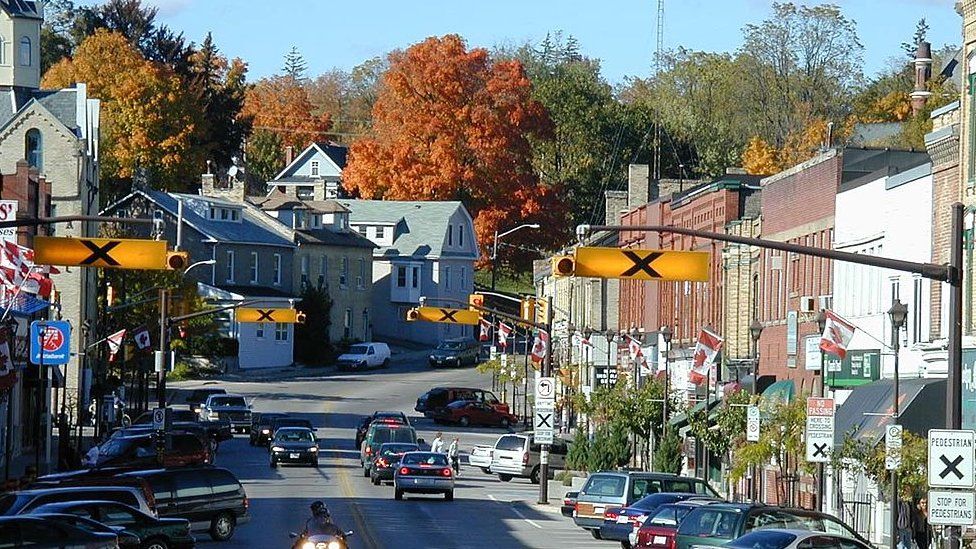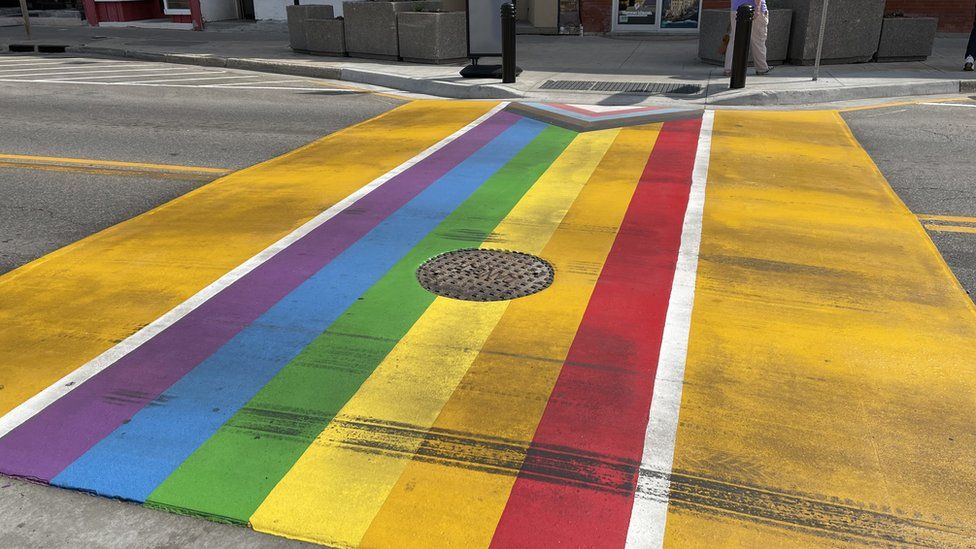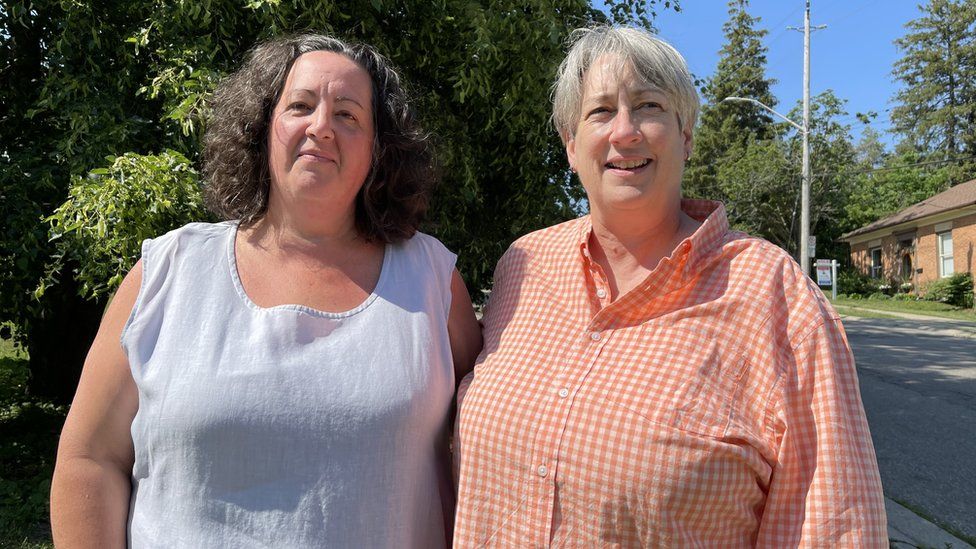little.indah.link
Back in the fall, Michelle Shiota noticed she wasn't feeling like herself. Her mind felt trapped. "I don't know if you've ever worn a corset, but I had this very tight, straining feeling in my mind," she says. "My mind had shrunk."
Shiota is a psychologist at Arizona State University and an expert on emotions. When the COVID-19 crisis struck, she began working from home and doing one activity, over and over again, all day long.
"I will be honest, for the past 14 months, I have spent most of my waking hours looking at a screen, either my laptop, my phone or a TV screen," she says, often from the same sofa, in the same room in her San Francisco home. All that isolation — and screen time — had taken a toll on Shiota.
During the pandemic, many people have felt their mental health decline. The problem has hit essential workers and young adults, ages 18 to 24, the worst, the Kaiser Family Foundation reported in May. The percentage of adults with signs of anxiety or depression has grown threefold, from about 10% to 30%.
Although some people are starting to test the waters of public life again, planning vacations and socializing more, others may still have lingering signs of what psychologists call languishing. They may feel an emptiness or dissatisfaction in day-to-day life. Or feel like they're stuck in weariness or stagnation.
Luckily, an emerging area of brain science has a new way to help lift yourself out of languishing — and bring more joy into your life. It worked for Shiota.
"I had to expand my consciousness," she says. And she did it by intentionally cultivating a particular emotion.
Explore ways to cultivate well-being with NPR's Joy Generator
How emotions arise
For thousands of years, there's been a common belief in Western culture about emotions — that they are hard-wired and reflexive, psychologist Lisa Feldman Barrett writes in the book How Emotions Are Made: The Secret Life of the Brain. "When something happens in the world ... our emotions come on fast and uncontrollable, as if somebody flipped a switch," she writes.
But when researchers look at what's going on inside the brain and inside the body during specific emotional states, the theory doesn't hold up.
Over the past decade, neuroscientists have begun to shift how they think emotions arise. Rather than being inevitable, hard-coded experiences, researchers now think emotions are malleable, and people have more influence over them than previously thought.
Say for example, you're walking in the woods, and you see a grizzly bear, says neuroscientist Anil Seth at the University of Sussex. "You recognize it's a bear," he says, "and then what happens?"
Previously researchers thought the emotion comes first. "You see a bear and then you feel afraid," Seth says. "Because you're afraid, your brain then jacks up your adrenaline levels."
Your heart rate rises. Your breath quickens. Your pupils dilate. And blood rushes to your skeletal muscles. The old theory was that "the fear sets in train all kinds of flight and fight responses so that you are well-prepared to run away and live another day," he adds. In other words, the emotion (i.e., fear) triggers the physiological responses (i.e., an adrenaline rush).
But according to the latest research, the human body probably works the other way around, Seth says. "The brain registers a grizzly bear, and that perception sets in train all the physiological responses." You get an adrenaline rush. Your heart rate goes up. You start breathing faster. Blood rushes to your muscles. And then the emotion comes.
The brain senses these physiological changes and decides which emotion to conjure up. The emotion is an interpretation of what's going on both inside the body (the adrenaline rush) and the outside of the body (the sight of the bear). "The brain has to figure out what caused the sensory signals," Seth says.
The chosen emotion not only helps the brain make sense of these signals, but it also helps the brain predict better the immediate future and how to handle the situation at hand. Which emotion would be most useful? Which emotion will help me survive?
To figure that all out, Seth says, the brain uses one more piece of information — and this part is key. The brain takes into account your past experiences, your memories.
Let's return back to that encounter with the grizzly bear. If your past experiences with bears come largely through news reports of attacks and maulings, then your brain will likely interpret your bodily sensations — raised heart rate, raised blood pressure, sweaty palms — as fear. Lots of fear! And this emotion will help drive you away from the bear. "So you can live another day," Seth says.
But what if your family hunts for a living? And your past encounters with a bear ended in a wonderful feast for you and your neighbors. Then your brain may interpret the adrenaline rush — the heavy breathing and raised heart rate — as excitement. This positive emotion will help drive you forward toward the bear, while all the physiological changes help you bring home dinner.
"Your brain uses memories from the past in order to create the present," says Barrett, who also does neuroscience research. "It's bringing knowledge from the past to make sense of the immediate future, which then becomes your present."
Neuroscientists call this "the predictive brain." Understanding how these predictions work is "very powerful knowledge," Barrett says. It means that emotions aren't hard-wired reactions to particular situations, which are out of your control (i.e., you see a bear and therefore you must feel afraid). But rather it's the opposite. "You can, in fact, modify what you feel in very direct ways," she says.
Emotional muscle memory
It's not about trying to force a happier or less fearful feeling in the moment, Barrett says. But rather, it's all about planning ahead. You can stack the deck in favor of your brain, choosing positive, uplifting emotions in two major ways, she says.
The first one is a no-brainer: You can take care of your body physically. According to this new theory, the brain constructs emotions based largely on physiological signals and other sensations from your body. So by boosting your physical health, you can decrease the chance your body will send unpleasant signals to your brain and, in turn, increase the chance, your brain will construct positive emotions instead of negative ones. "You can get more sleep. You can eat properly and exercise," she says.
The second approach to influencing your emotions may be less familiar but likely just as impactful: You can "cultivate" the emotions you want to have in the future.
"If you know that your brain uses your past in order to make sense [of] and create the present, then you can practice cultivating [positive] emotions today so that your brain can automatically use that knowledge when it's making emotions tomorrow," Barrett says.
By practicing particular emotions, you can "rewire" your brain, she says. "Your brain grows new connections that make it easier for you to automatically cultivate these emotions in the future." So when you start to feel a negative emotion, such as sadness or frustration, you can more easily swap that negative feeling for a positive one, such as awe or gratitude.
"For example, when I am video chatting with somebody in China, I can feel irritated very easily when the connection isn't very good," Barrett says. "Or I can feel awe at the fact that someone can be halfway around the world, and I can see their face and hear their voice, even if it is imperfect, and I can be grateful for that ability."
In this way, emotions are a bit like muscle memory. If you practice the finger patterns for a chord on the piano, a few minutes each day, eventually your fingers can play those chords with little thought. The chords become second nature.
The same goes for emotions. To help pull out of the pandemic blues, it's time to start "practicing" positive emotions — and it won't take as much as learning all the chords.
All you need is about five to 10 minutes, says psychologist Belinda Campos at the University of California, Irvine. "Hopefully it wouldn't take people as much effort as it does to eat healthier or to exercise," she says. "Positive emotions feel good. I think people will find them rewarding enough to return to them and keep doing them."
Scientists say this practice is helpful to prevent or work with everyday doldrums and weariness. It isn't intended as a replacement for treatments, such as counseling and medication, for serious mood disorders or anyone going through intense or prolonged bouts of depression.
The antidote to isolation
A few decades ago, scientists used to lump together all kinds of positive emotions into one concept: happiness. Since then, a group of psychologists, including Campos and Shiota, figured that there is a whole "family tree" of positive emotions, including pride, nurturant love, contentment, nostalgia, flow, gratitude and awe.
One reason these emotions often make us feel good is they shift our focus away from the self — that is "me and my problems" — and onto others, Campos says. "They help put the self in its balanced place, of not being absolutely the highest thing on the to-do list. They help us focus on the joys that relationships can bring."
She adds, "In this way, positive emotions are part of what helps you to put others before the self." And helping others often makes people feel good. "So, for example, people report levels of higher well-being when they're giving to others, and it can feel better to be on the giving end rather than the receiving end," she says. "I think that's more evidence that focusing on others can be really good for us."
The idea of cultivating positive emotions is pretty simple. Choose one of these emotions and then do a specific action regularly that helps evoke it. Psychologists have devised suggestions for how to get started, but it can be as simple as taking time to notice and appreciate the small things around you that uplift you. (Read three tips to get started at the end of this piece.)
Over time, your brain will start to use these emotions more often — and turn to negative emotions less frequently.
Take, for instance, gratitude.
For the past year and a half, Dr. Sriram Shamasunder has been on the front lines of the COVID-19 pandemic. Shamasunder is a physician at the University of California, San Francisco, and he spends about half his time in low-income communities around the world.
To help bring more "light" into his life, Shamasunder started to keep a gratitude journal. It was part of a project for the Greater Good Science Center at the University of California, Berkeley.
Each day, Shamasunder simply jotted down things around him for which he was grateful. "So not necessarily spending a whole lot of time racking my mind, but just everyday occurrences that were powerful or meaningful or just simple and beautiful," Shamasunder told The Science of Happiness podcast. He jotted down the doctors and nurses working on Sunday, "the unseen hands, who created a vaccine," "the evening light, magical and orange and blue," and a tree outside that provides refuge to birds, ants and squirrels.
By intentionally cultivating gratitude, for even a short period each day, Shamasunder found it easier to evoke positive feelings throughout the day. "The act of naming the gratitudes carried into the next day and the next, where I became more aware of things in my life that I should cherish in the moment, or I need to cherish."
An awe a day keeps the malaise away
Back in the fall, when Shiota, the Arizona State psychologist, felt her mind shrinking, she knew exactly which emotion she needed to cultivate.
She got up off the couch, drove West from her San Francisco home and ended up at the edge of the ocean. "I am trying to reconnect with the vast natural world, with the universe beyond my professional and personal responsibilities, and beyond this moment in time," Shiota writes in the Annals of the New York Academy of Sciences. "I am searching for awe."
Shiota is a world expert on awe. She says the emotion is difficult to define, "but I think that what we are dealing with is a change that happens in our mind — and in our bodies and in our feelings — when we encounter something so extraordinary, that we can't explain it."
That encounter can be with the grand, such as a panoramic view of a red sun, dipping into the Pacific Ocean. It can be with something the miniscule, such as the black spots on a ladybug. (How did they get so perfectly round?) It can be a scent, a taste or sound. "It can be a very complex and powerful song that you've never heard before, or even a scene in a TV show," Shiota says.
Whatever it is, the extraordinariness of the event makes you pause, for a bit, Shiota says, and try to figure it out. How does a rose smell like a lemon? Why does a perfectly ripened peach taste so good? "We simply slow down our body, slow down," Shiota says.
And this pause calms your body. "I've found evidence that the activation of our fight-flight sympathetic nervous system dials back a little bit."
The feeling of awe also widens your perspective, she says — which Shiota desperately needed after spending so much time looking at screens. "I had to consciously force myself to look further away. I had to let my senses — my sight, my sound, take in a broader scope of what was going on around me."
In addition to going to the beach, Shiota also simply walked around her neighborhood, looking for unexpected and inspiring things.
"There was this amazingly elaborate, chalk drawing in recognition of somebody's birthday. There was a couple, in which one person was clearly helping the other learn to roller-skate on the San Francisco hills. And they're clinging on to each other for dear life," she says with a chuckle. "Then the flowers! If you look closely at flowers, in a way that you never take the time to do, you'll see how incredibly intricate they are.
"So the opportunities for awe are there," she says. "Look for what moves you, what pushes your sense of boundaries of what is out there in the world."
It took a little time — and patience — Shiota says, but eventually these "awe walks" helped her recover from her pandemic funk. Practicing awe released her mind from that constraining "corset."
"Then my mind was able to spread out and take up the space that it needs to take to feel OK," she says. And once her mind released, her body followed. "When you take off the corset, your whole body goes, 'Oh, oh! That's much better.' "
3 ways to practice happiness
Psychologists say you can improve your well-being if you recognize moments of positive feelings, value them and seek them out more often. Below find a few other ideas for cultivating positive emotions and turning happiness into a habit. To explore more ideas, check out NPR's Joy Generator.
1) Share some appreciation: Psychologist Belinda Campos at the University of California, Irvine, recommends this simple practice. Get together with some friends and write out on cards three things that you're grateful for in the other person. Then share the cards with each other.
"We're using this task right now in my laboratory, and it seems to be very evocative of positive emotion," she says. And though the data are preliminary, she says, "what we see so far is that people enjoy writing what they appreciate in others, and they enjoy sharing it with the other person. It seems to be affirming bonds." Sometimes it even ends in hugs.
2) Take an awe walk: Take a 5-minute walk outside each day, where you intentionally shift your thoughts outward. Turn off your cell phone, or even better don't bring it with you. "Focus your attention on small details of the world around you," suggests psychologist Piercarlo Valdesolo at Claremont McKenna College. Look for things that are unexpected, hard to explain and delightful.
For example, take a moment and find a crack in the sidewalk, where a weed is poking out," says psychologist Lisa Feldman Barrett. And let yourself feel awe at the power of nature. "Practice that feeling over and over again," she says. "Practice feeling awe at colorful clouds, an intricate pattern on a flower, or the sight of a full moon."
3) Listen to a calm concert: A recent meta-analysis study from the University of Michigan found that sounds of nature, including birdsongs and water sounds, lower stress, promote calmness and improve mood. Find a bench in your neighborhood under a tree or near water. Sit down, close your eyes, and consciously listen to the natural sounds around you. Listen for birdsongs, rustling wind or trickling water. Try sitting for at least 5 minutes whenever you get a chance. Allow and enjoy calm to wash over you.
Adblock test (Why?)
The Link Lonk
June 29, 2021 at 04:00PM
https://www.npr.org/sections/health-shots/2021/06/29/1010319240/stuck-in-a-rut-sometimes-joy-takes-a-little-practice
There's A Simple Way To Feel Happier, According To The New Science Of Emotions : Shots - Health News - NPR
https://news.google.com/search?q=little&hl=en-US&gl=US&ceid=US:en





/cloudfront-us-east-2.images.arcpublishing.com/reuters/KBFDK2H7Z5M75BNYJH7JWALLJM.jpg)
 Roma activist Josef Miker does not expect the death of Tomas to change much for the Roma [Jan Mihalicek/Al Jazeera]
Roma activist Josef Miker does not expect the death of Tomas to change much for the Roma [Jan Mihalicek/Al Jazeera] Simona Tomasova, Tomas’s sister, is trying to raise funds for another autopsy [Jan Mihalicek/Al Jazeera]
Simona Tomasova, Tomas’s sister, is trying to raise funds for another autopsy [Jan Mihalicek/Al Jazeera] People raise the Roma flag in Teplice, where Tomas died [Jan Mihalicek/Al Jazeera]
People raise the Roma flag in Teplice, where Tomas died [Jan Mihalicek/Al Jazeera] A man gestures to riot police as people protest during the rally [Jan Mihalicek/Al Jazeera]
A man gestures to riot police as people protest during the rally [Jan Mihalicek/Al Jazeera] Protesters held up ‘Roma lives matter!’ placards as they called on the police for answers [Jan Mihalicek/Al Jazeera]
Protesters held up ‘Roma lives matter!’ placards as they called on the police for answers [Jan Mihalicek/Al Jazeera]












